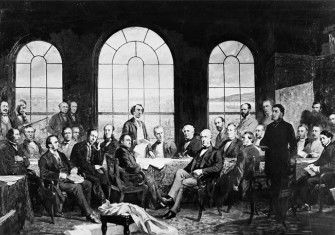With the Crofters to Canada
Archaeologist Keith Branigan uncovers clues revealing the patterns of emigration from the Isle of Barra to British North America, from 1770 to 1850.
The 8km-long Barra, was first settled around 4000BC by farmers who cleared the light tree cover to build homes, graze sheep and cattle, and grow barley. New settlers from Ireland arrived in the early Middle Ages and established the clan Macneil. The population grew rapidly in the late eighteenth and early nineteenth centuries, due to the introduction of the potato, development of a fishing industry, the opportunities for military service and the rise of the kelp industry. By 1820, however, kelp, fishing and soldiering were all in decline and the estate went into debt. The last of the direct ancestral line of Macneils had to sell the island in 1840, and ten years later came Colonel Gordon’s clearance.






